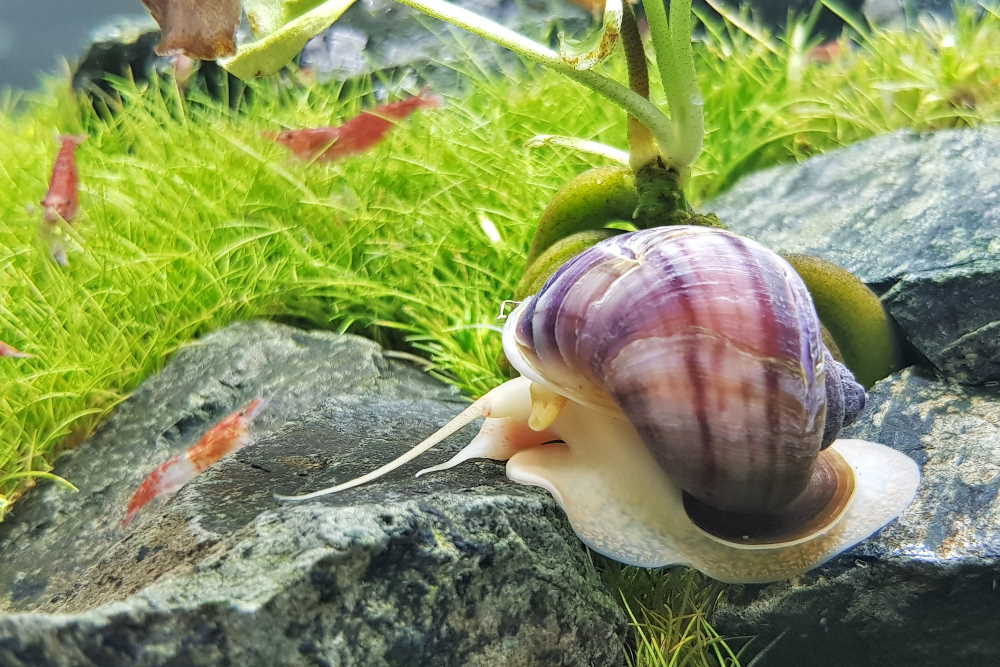Snails are fascinating creatures that often go unnoticed in the bustling ecosystems of fish tanks. However, their behavior and role within aquatic environments are both intricate and vital. This guide aims to shed light on the nuances of snail behavior in fish tanks, providing aquarium enthusiasts with the knowledge needed to appreciate and care for these understated inhabitants.
The Role of Snails in Aquariums
Natural Cleaners
Snails play a crucial part in maintaining the cleanliness and balance of aquariums. They are known for their ability to consume algae, dead plant material, and leftover fish food. This not only helps in keeping the tank clean but also aids in the prevention of harmful algae blooms.
Indicators of Environmental Health
The behavior and health of snails can serve as an indicator of the overall condition of the aquarium. Sudden changes in their behavior, such as increased surface activity or a lack of movement, can signify issues with water quality or the presence of toxins.
Types of Snails and Their Behaviors
Peaceful Algae Eaters
- Nerite Snails: Known for their remarkable algae-eating capabilities, these snails are a popular choice among aquarists. They are particularly effective against tough algae types that other inhabitants might ignore.
- Mystery Snails: These larger snails are not just algae eaters; they also bring a pop of color to aquariums. Their behavior includes exploring the tank and occasionally floating to the surface to take in the air.
Night-Time Workers
- Malaysian Trumpet Snails: Often unseen during the day, these snails burrow into the substrate, aerating the soil and cleaning up detritus. Their nocturnal activities help prevent the buildup of harmful gases in the substrate.
Snail Behavior and Tank Conditions
Water Quality and Snail Health
Snails are sensitive to changes in water conditions. High levels of nitrates and ammonia can be detrimental to their health. Regular monitoring of water parameters is essential to ensure a safe environment for snails and other tank inhabitants.
Temperature and Lighting
- Temperature: Most snails thrive in temperatures between 68°F and 78°F. It’s important to maintain a stable temperature within this range to prevent stress and ensure healthy behavior.
- Lighting: While lighting primarily affects plant growth and fish behavior, it also influences snail activity. Adequate lighting schedules help simulate a natural environment, encouraging snails to follow their usual behavioral patterns.
Snail Reproduction and Population Control
Understanding Reproductive Behavior
Some snail species can reproduce quickly, leading to overpopulation issues in tanks. Recognizing the signs of reproduction and managing snail numbers are crucial aspects of aquarium maintenance.
Strategies for Population Management
- Manual Removal: Regularly checking decorations and the tank’s sides for eggs and removing excess snails can help control their population.
- Tank Mates: Introducing species that naturally feed on snails can keep their numbers in check without the use of chemicals.
Common Issues and Solutions
Overpopulation
An abundance of food and a lack of predators often lead to snail overpopulation. Reducing food waste and considering biological control methods are effective strategies to address this issue.
Shell Health Problems
Poor water conditions can lead to shell deterioration in snails. Ensuring a balanced diet with calcium and maintaining optimal water parameters are key to promoting healthy shell growth.
Conclusion
Snails are not merely tank cleaners; they are integral parts of aquatic ecosystems, contributing to the health and stability of fish tanks. Understanding their behavior, needs, and the signs they give about their environment allows aquarists to create more balanced and thriving ecosystems. By appreciating the subtle yet significant role of these creatures, aquarists can enhance both the beauty and functionality of their aquariums.

